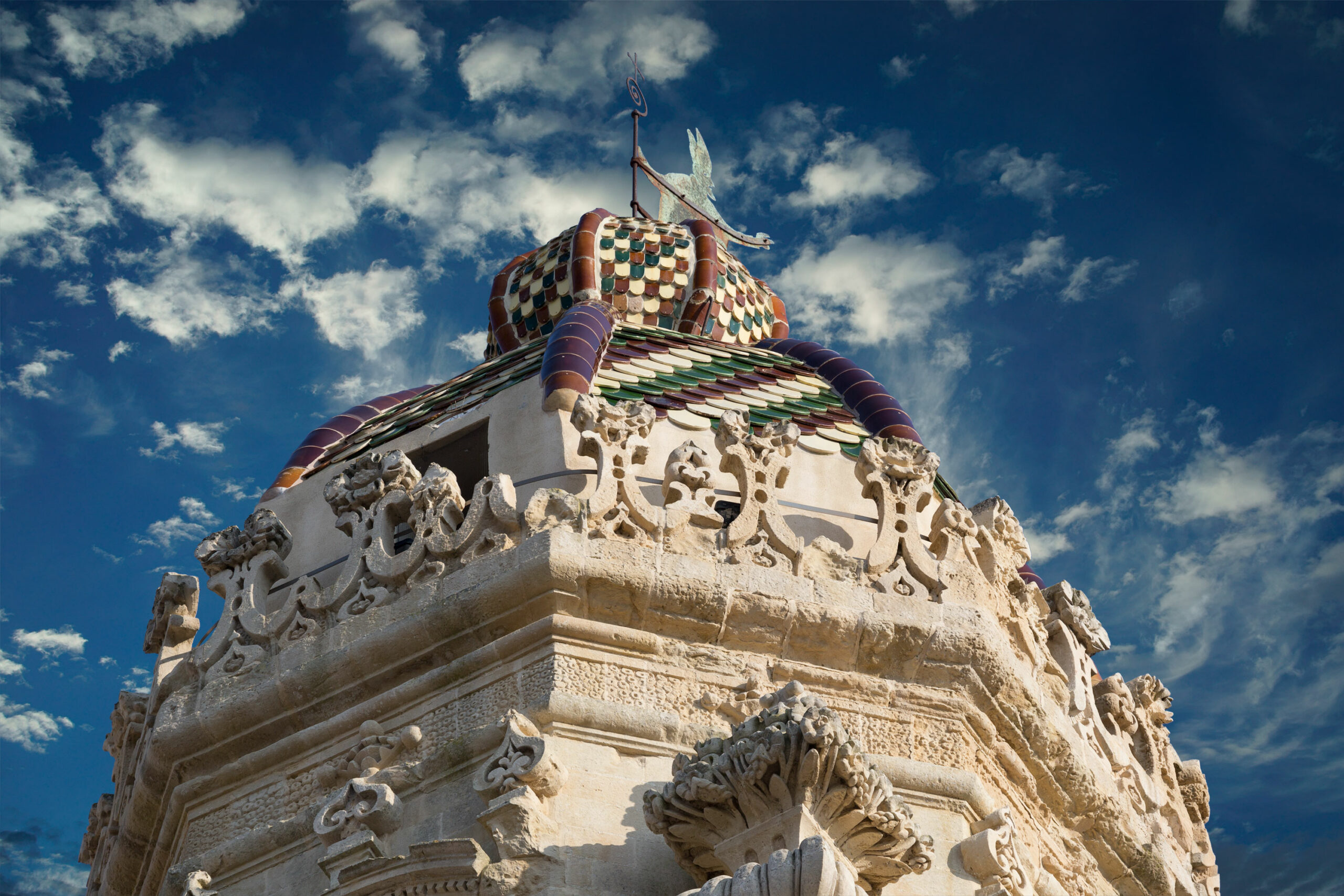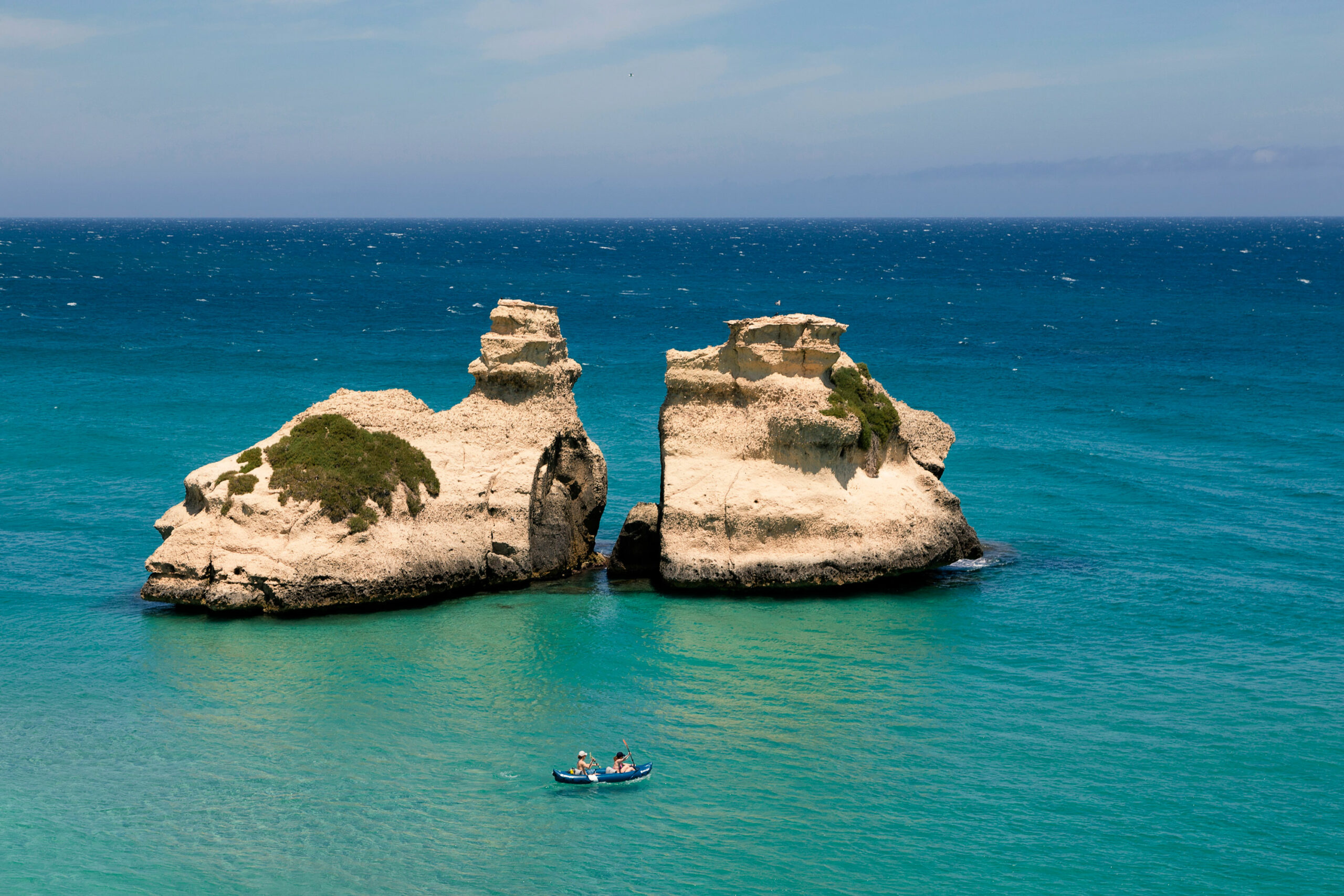Mottura Winery’s success is the fruit of an area steeped in history, ancient food and wine traditions and a unique mix of cultures.
Salento is the southernmost part of the Puglia region, a longstanding place of arrival and transit for peoples and cultures, from the Greeks to the Romans, the Byzantines and the Arabs. It is a strip of land between two Mediterranean seas, the Ionian and the Adriatic, and it is the first point where the sun rises in Italy.
Its weather, landscape and art, its strong ties with traditions, make Salento an alluring place that leaves its mark on the memory and heart of its visitors.
The age-old culture of this area is highly valued also by events that every year celebrate the history and traditions of its people who, until little over 50 years ago, lived mainly off agriculture.

The spirit of the tarànta lingers throughout the entire area of Salento and its musical and cultural heritage resonates highly with the new generations. Every summer, for the whole month of August, there is a series of musical events devoted to the “pizzica”, the music and the dance of the “spider”.
One of these is the “Notte della Taranta”, the biggest folk music concert in Europe, which takes place in Melpignano at the end of August. As a tribute to this tradition, Mottura Winery has dedicated the label of one of its finest wines, the Primitivo di Manduria DOC “Stilio” to the Taranta dance.
The beauty of Salento does not, however, fade after the summer: all year round you can enjoy genuine, tasty gourmet food and the outstanding quality of the wines made from the grapes grown exclusively in this area, such as Negroamaro and Primitivo.

This cocktail of nature and farming culture has given rise to the art of the folk singing and dancing that has made Salento famous worldwide. Many of the songs form the basic elements of a curative ritual, a kind of “music therapy”, which farmers would use to cure men and women from the venomous bite of a mysterious spider. The bite, or sting, of this spider, known as a “tarànta”, would trigger convulsions and hysterics in the victim, who were often women, bitten as they were working in the countryside. The phenomenon, called “tarantism”, an evocative term loaded with meaning, besides being unique in its kind, has been studied by internationally famous anthropologists.

About ten kilometres from the coasts of Gallipoli and a little less than 40 from Lecce, Tuglie is situated in the hinterland of south Salento. It has ancient origins, to which the four “Menhir”, or monoliths, found in the open countryside, stand as testament. The urban settlements date back to the Roman age: the “Grotte Passaturi” or “Case vecchie”, according to some academics, were the residence of the Tulli.
The town, set in the countryside, offers a wealth of cultural itineraries: from the Radio Museum, the first in southern Italy, to the Museum of Farming Culture in the Palazzo Ducale, the 17th century residence of the Venturi Dukes.
Tuglie, like Otranto but less famously, was involved in the dramatic Ottoman occupation of 1480, an event that left a deep mark on the culture, language and art work of Puglia. The fief of Tuglie, razed to the ground by the Ottomans, was left abandoned for years. A forest of Cedar trees (tuie, in Italian) grew in the Passaturi district and, as legend would have it, their presence gave its name to Tuglie, the village that sprang up around the baronial palace.
The historical centre of Tuglie opens into a Baroque-style square, amidst 17th century courtyards and palazzi set in a natural woodland. In the alleys of the historical centre you can see the old wells, called pileddhe (stone tubs), the focaliri (old chimneys), and the characteristic arches that join one house to another, framing the ancient courtyards of Tuglie.
Mottura Winery’s production areas in Salento are in a particular “terroir” bordered by the towns of Cellino San Marco, Campi Salentina, Salice Salentino and Guagnano.
The sediment of tertiary and quaternary formations lie on a cretaceous carbonate bedrock, a morphological and structural configuration deriving from tectonic and paleo-geographical events which happened in succession in the area of Salento from the Mesozoic era. The carbonate bedrock then underwent numerous uplifts and subsidence events with sea flooding. The result is the presence of a carbonate substrate on which more recent deposits lie: calcarenite, clayey and sandy sediments. The characteristics of these areas mean that even in years of drought, optimal conditions are still created for plant growth, producing a wine that is extremely rich in extracts, concentrates and body.
Two vine training systems are used: bush-trained (alberello pugliese) and vertical-trellised (spalliera).
‘Alberello’ is the oldest training system used in southern Italy and the islands and is widespread also in other regions with hot, dry climates. It was conceived to grow a smaller plant in order to adapt the vineyards’ productivity to the adverse arid weather conditions of southern Italy.
Depending on the vine species, the vertical trellised method instead uses either short pruning systems such as spurred cordon, or long such as guyot.
Primitivo
It takes its name from the early ripening of the grapes which occurs between late August and early September. The plantations, mainly bush-trained, but also vertically-trellised, extend across the areas of Taranto, Salento and in Gioia del Colle, in the area of Bari. The origins of this grape variety are uncertain: it is supposed it may have come from Dalmatia and from Illyria, and to Salento 4,000 years ago with the Phoenicians who emigrated from the lands that now correspond to Syria and Lebanon. Recent research has revealed a genetic link between Primitivo, Zinfan from California and the Croatian Crljenac. It would in fact seem that all three followed the same routes in the eastern Mediterranean. Primitivo is grown in soils characterised by chalky tuff rock, in a layer of clay and in red soils with iron compounds. Primitivo is a red wine and generally has a deep ruby red colour with hints of purple that turn garnet with ageing. It is warm, full-bodied and mouth-filling with delicate tannins and good persistence.
Negroamaro
The name derives from the term in dialect “niuru maru”, meaning “twice black”, from niger in Latin and mavros in Ancient Greek (maru in dialect) for the characteristic black colour of the grape and the typical slightly bitter taste of its wine.
The origins of this vine species are very old; in fact, it would seem that it was brought to Salento by the Greeks more than 2,000 years ago. The first records of its name however were not found until the 19th century.
It is cultivated across the entire Arco ionico leccese, the area of Brindisi and in the province of Taranto. The grapes generally ripen between late September and early October. It is easily adaptable to different kinds of soil, with a preference for limestone-clay soils, and for hot and even dry climates. It is mainly bush and overhead trellis trained, with long or short pruning.
Negroamaro generally produces high consistency red wines but is just as suitable for white vinification for the production of rosé wines.
To the nose, Negroamaro wine is characterised by fruity notes, floral notes such as sweet violet and in some cases slightly balsamic.
Fiano
An ancient white grape vine species from Roman times, also called Latino to distinguish it from Greek vine species. Originally from southern Italy, its name probably derives from “apianae” grapes, mentioned by Columella and by Pliny, for the highly sugary fruit’s ability to attract bees. The first vines were planted in Lapio, a town in the province of Avellino, which took its name from the grape and where Fiano is still produced today. These grapes make robust white wines with good aromatic finesse.
Nero di Troia
Mottura’s historical winery is in Tuglie and is a typical example of late 19th century industrial architecture within a splendid estate, with Baroque carved stone balconies and vaulted cellars, home to the family’s wine-making secrets for almost 100 years.
All of the modern equipment coexists with the charm of the building’s marvellous old star vaults. Fining in steel, ageing in oak barrels, the bottling phases and storage of the wines take place in restored and functional areas
The winery is also the perfect location to taste Mottura wines: a highly sought-after and valued experience that will make your visit to Salento even more memorable.
Come and visit our winery in Tuglie, for personalised tours in Italian and in English, with guided tastings of the finest Mottura wines, matched with typical local products.